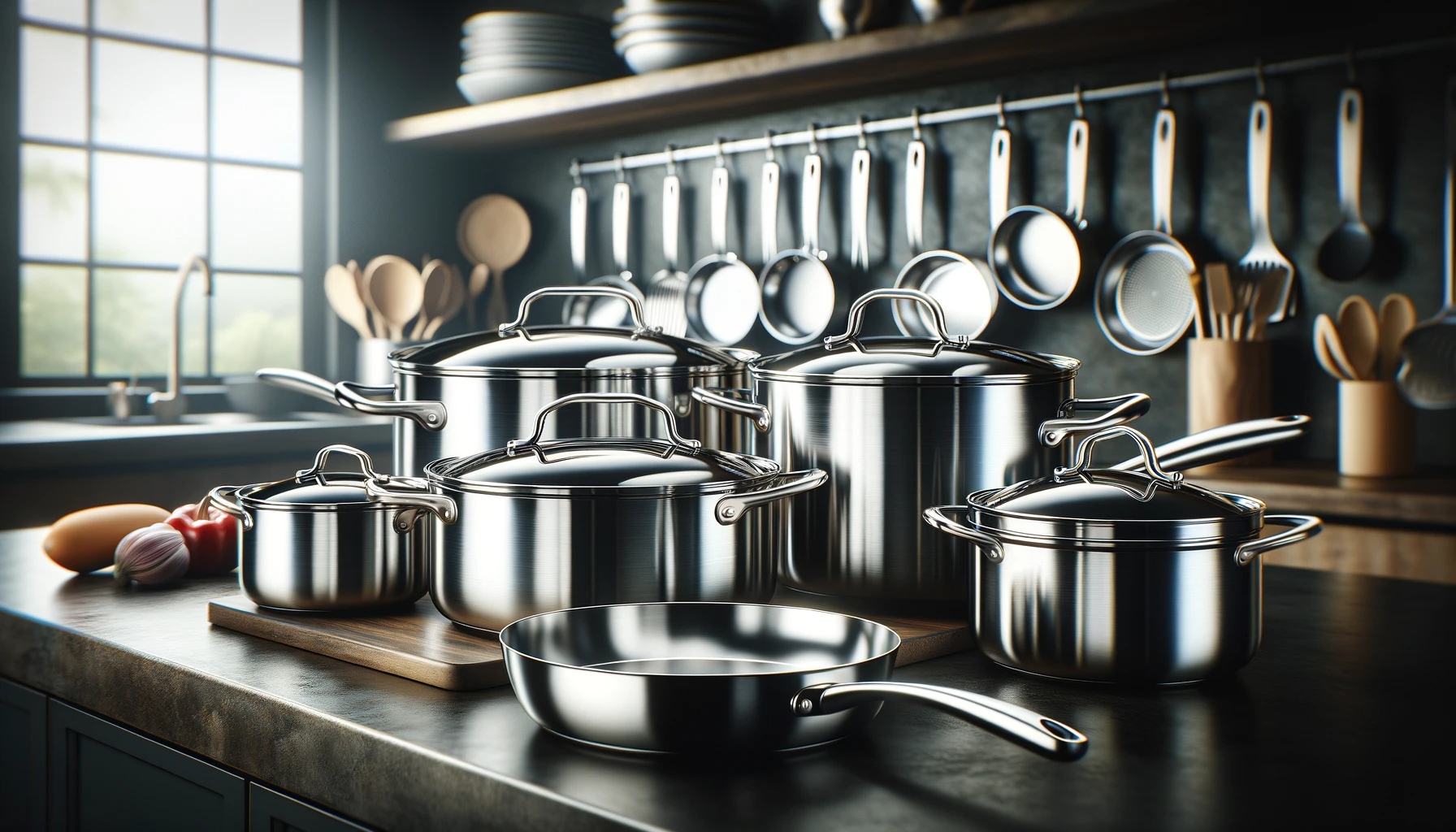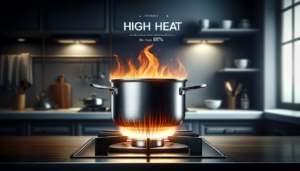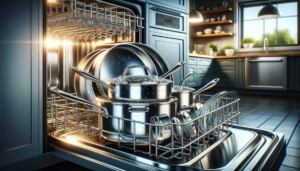With alarming headlines about toxins in cookware, is your stainless steel pot really safe for simmering tonight’s vegetable soup?
Stainless steel cookware is widely considered a safe option thanks to its non-reactive properties and resistance to corrosion, but some still debate potential metal leaching risks.
Let’s examine the facts behind whether triply stainless steel cookware delivers on its reputation for being an inert and durable material suited for longterm cooking safety.
Is Triply Stainless Steel Cookware Safe?
Yes, triply stainless steel cookware is considered safe for cooking when it meets quality manufacturing standards.
The added molybdenum enhances corrosion resistance to prevent leaching of chemicals.
Providing care guidelines are followed to avoid compromising the protective layer, triply stainless steel pots and pans offer inert and non-reactive properties for cooking needs.
We will explore the specifics around stainless steel grades and safety in more detail throughout this article.
What is Stainless Steel?

Stainless steel is an alloy of steel containing chromium and in some cases, nickel and other metals as well.
The chromium forms an invisible passive layer of chromium oxide on the steel’s surface that resists staining, rusting and corrosion.
There are different grades of stainless steel based on their chemical composition.
The most common designations are 18/8 and 18/10.
The first number refers to the percentage of chromium present and the second represents the percentage of nickel.
18/0 has no nickel content.
Triply stainless steel contains chromium, nickel as well as molybdenum.
The addition of molybdenum enhances the corrosion resistance properties of the alloy.
Is Stainless Steel Cookware Safe?
Stainless steel cookware is generally considered safe and non-toxic for cooking when used properly.
The alloy itself does not react with foods or release harmful chemicals at ordinary cooking temperatures making it very stable.
Stainless steel is also sturdy and durable.
It does not easily warp, dent or scratch like some cookware materials which allows it to provide even heat distribution.
Stainless steel has a smooth non-porous surface that prevents food particles from getting stuck, making cleaning easier.
This also inhibits bacteria growth.
Leaching of Metals into Food
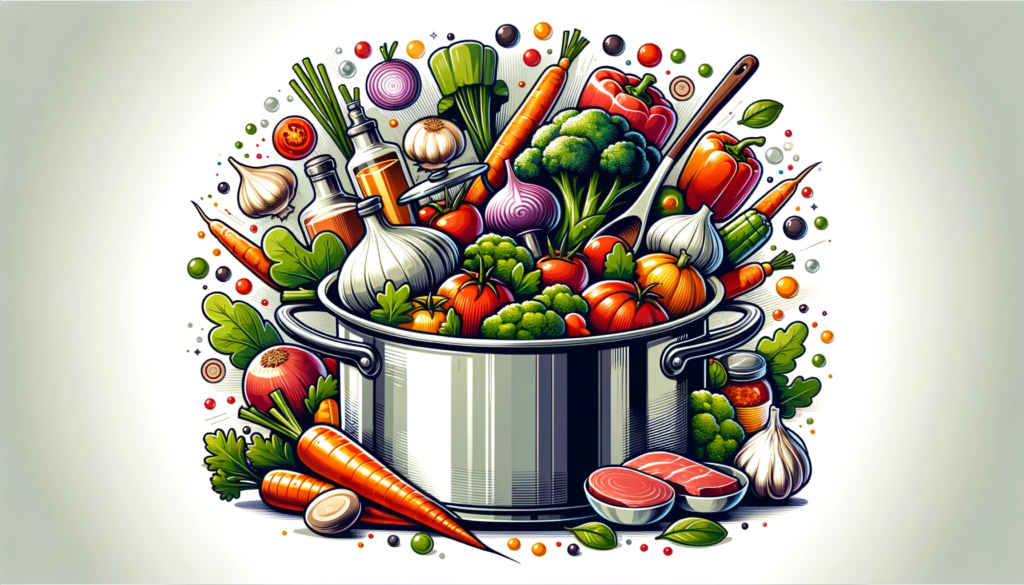
While stainless steel itself does not react or leach chemicals during cooking, small amounts of the metals chromium and nickel can dissolve into acidic foods during the cooking process.
extended cook times and high heat can increase the amounts released.
However, studies have shown the levels absorbed from even highly acidic solutions like vinegar and wine are minute and well below the safety limits set by health agencies.
Materials like aluminum and copper can leach significantly higher levels in comparison.
To minimize potential leaching in stainless steel pans, avoid cooking extremely acidic ingredients for long periods on high temperatures.
Avoid Damage to the Cookware
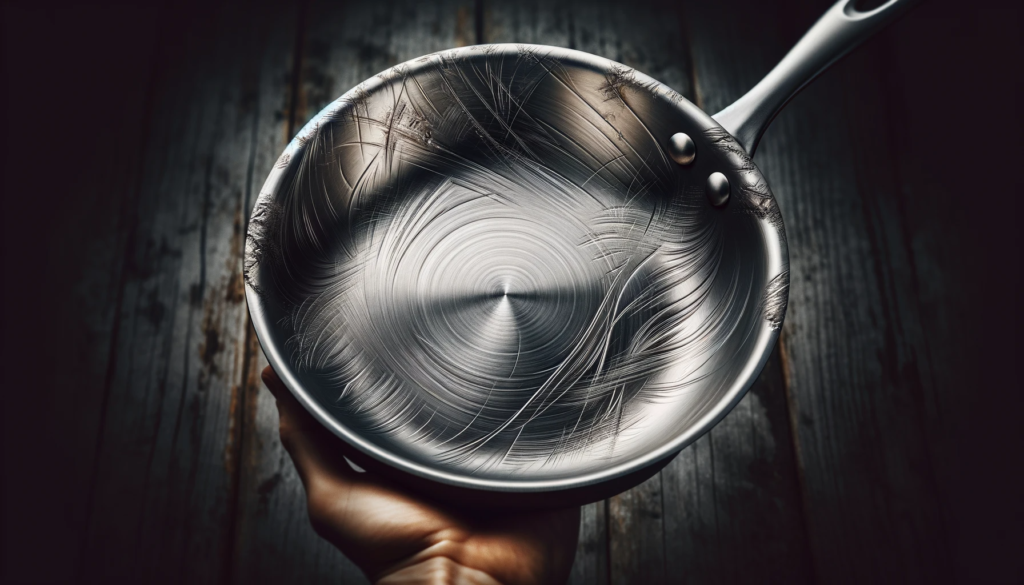
The protective chromium oxide layer that makes stainless steel pans non-reactive can become compromised if the surface becomes damaged.
Scratches and dents caused by harsh scouring or use of abrasive cleaners can remove this layer over time and expose the steel underneath.
This leads to higher reactivity and leaching.
Similarly, overheating an empty pan can destroy the passivity leading to pitting and corrosion.
To prevent damage, use non-abrasive cleaning tools and avoid metal utensils.
Clean regularly to maintain the protective layer.
Always cook with oil, water or food in the pan as an extra barrier rather than heating empty.
Higher Nickel Content Controversial
While steel containing 8 to 10% nickel does not typically pose safety issues, some still debate the risks of leaching especially for those with nickel sensitivity.
The higher 20% nickel content in the 400 series stainless steels has come under particular scrutiny.
However, these concerns seem isolated to questionable cookware from less reputable manufacturers.
High-quality 18/10 and 18/8 from leading brands comply with food safety standards.
When sourcing stainless steel pans, look for a well-known name, check for the steel grade markings and evaluate build integrity.
Grades 304 vs 316 Stainless Steel
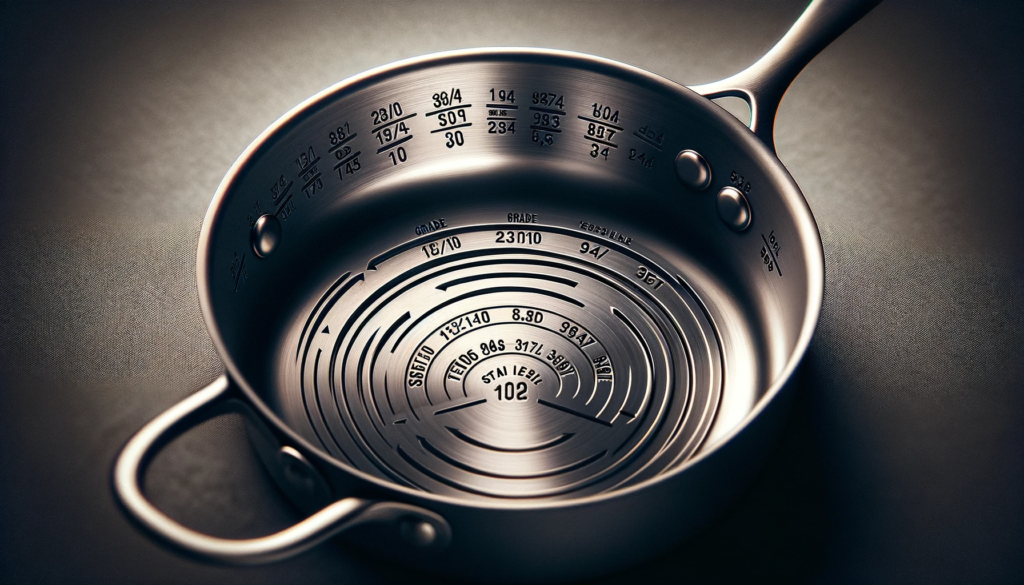
The most common grades of stainless steel used in cookware are 304 and 316.
Grade 304 contains chromium, nickel and manganese with good heat resistance.
Grade 316 has added molybdenum to increase corrosion protection where higher temperature or moist conditions warrant it such as in cooking pots.
Both offer similar safety for food contact but 316 provides longer lifespan.
Esthetics also enter preference where 316 shows less visible wear like fingerprints over time.
Evaluate intended cookware use to decide if premium grade 316 stainless steel offers worthwhile benefits over price-friendly 304.
How Stainless Compares to Other Cookware

Stainless steel is not as naturally non-stick as ceramic or coated materials, but excels in stability and durability.
Aluminum and copper offer better conductivity but can dent easily and interact negatively with some foods.
Reactive but inexpensive carbon steel requires seasoning for protection akin to cast iron which remains a popular choice despite heft and maintenance needs.
Stainless steel strikes an optimal balance between inert properties, sturdy construction, reliability and ease of use over a very long lifespan.
While no cookware achieves perfection across all criteria, stainless steel kits tick many boxes to satisfy most kitchen needs adequately and safely.
Maintaining Stainless Steel Cookware
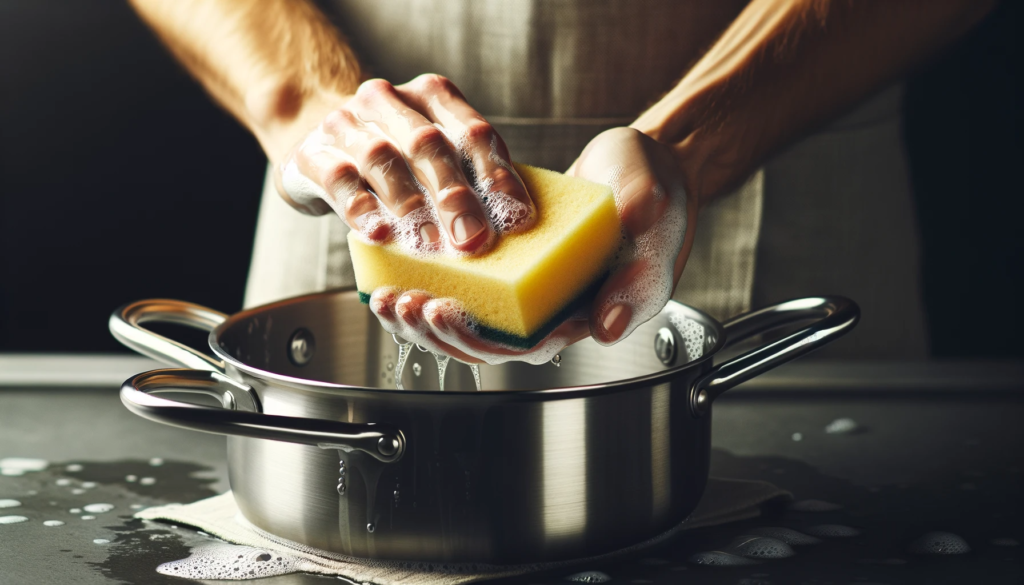
Care for stainless steel cookware properly will maximize its longevity while ensuring ongoing safe usage.
Allow pans to cool before cleaning.
Use non-abrasive scrubbers like Dobie pads avoiding steel wool or harsh scouring powders which damage the protective layer.
Avoid bleach or cleaners containing chlorides.
For stubborn deposits, soak in white vinegar water before scrubbing.
Metal utensils will scratch the surface so use wood, heat-resistant nylon or silicone where possible.
Always clean thoroughly after cooking highly salty or sugary ingredients.
Rinse, dry thoroughly.
Reapply a thin layer of vegetable oil to maintain the invisible passive layer after each wash.
Is Surgical Stainless Steel the Same Grade?
Surgical stainless steel is often type 316L steel, containing even lower carbon for enhanced welding properties.
It has excellent corrosion resistance for sterilization requiring repeated high temperature steam autoclaving.
The “L” denotes lower carbon to guard against carbide precipitation.
Food-grade 316 satisfies similar anti-corrosion needs for pots taking prolonged simmering while 304 serves sufficiently for most household pans.
Medical steel demands stricter standards wanting no adulterants that may leach trace elements over years of invasive contact.
Hence surgical stainless utilizes even more tightly controlled production for biological safety margins than cookware requires.
How Stainless Steel is Made
Manufacturing stainless steel first requires making steel with iron and carbon.
Chromium is added along with elements like nickel and molybdenum which shape its properties.
The molten metal gets cast into solid form before heating and rolling between massive presses to produce thin sheeting.
Stamping cuts shapes for pots or other uses.
Cookware gets molded by spinning or stretching pressed steel sheets over dies under large pressure or machine hammering.
Handles get welded on before polishing, passivation and final finishing.
Each step tightly governs the characteristics and purity defining grades for applications like food contact or medical use where safety is paramount.
Global standards ensure stainless steel quality for reliability across industries.
Conclusion
When sourced from leading brands using quality steel grades like 18/10 or 18/0, stainless steel cookware provides a safe, stable and durable choice for cooking needs.
While no material offers perfection across all criteria, stainless steel balances inert properties to prevent chemical leaching with sturdy construction for longevity and reliable performance.
Maintained properly stainless steel pans and pots offer good longevity without risk of contaminating food.
For those wanting confidence in the safety of daily cookware, stainless steel makes a sensible option over many alternative materials.
